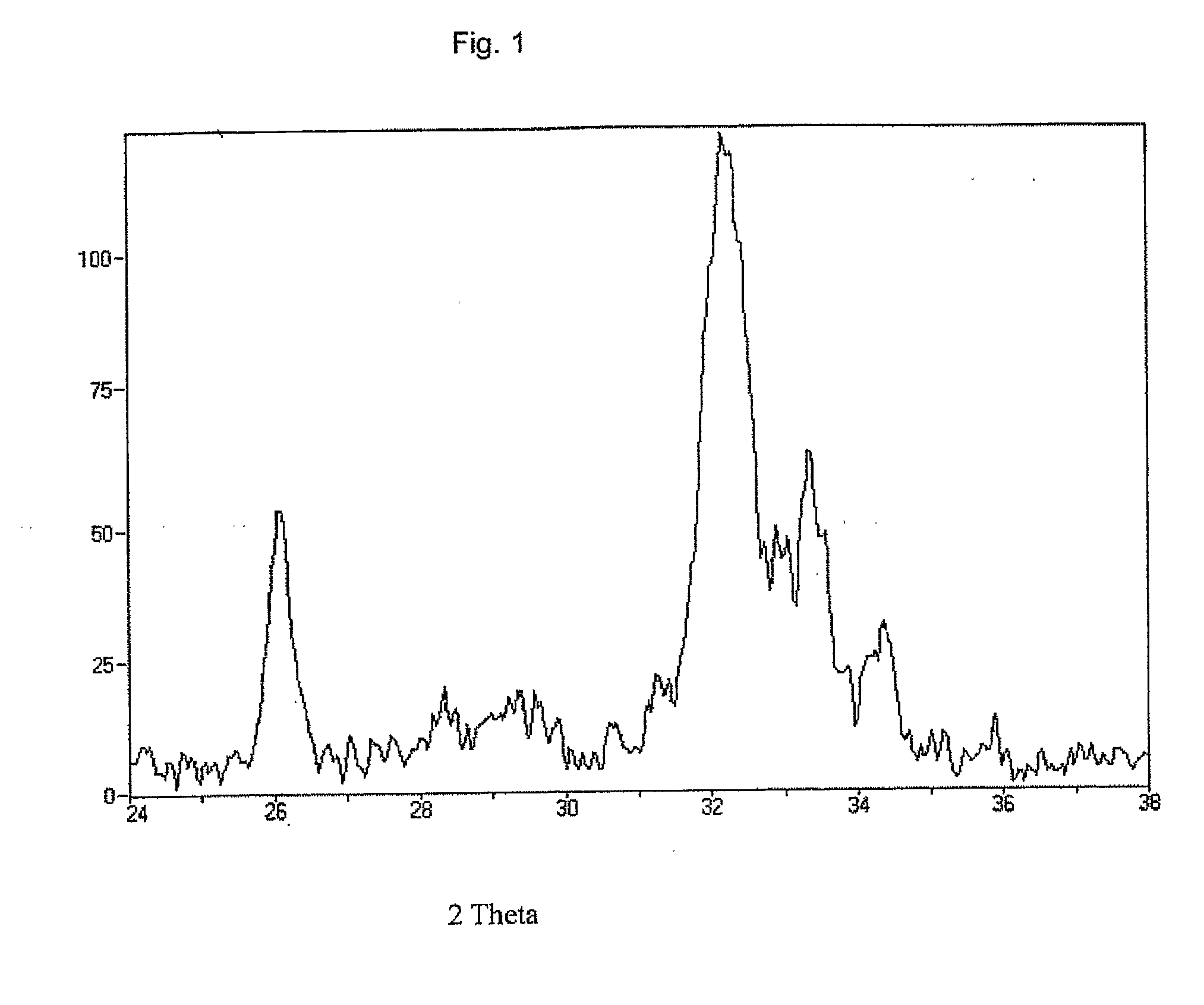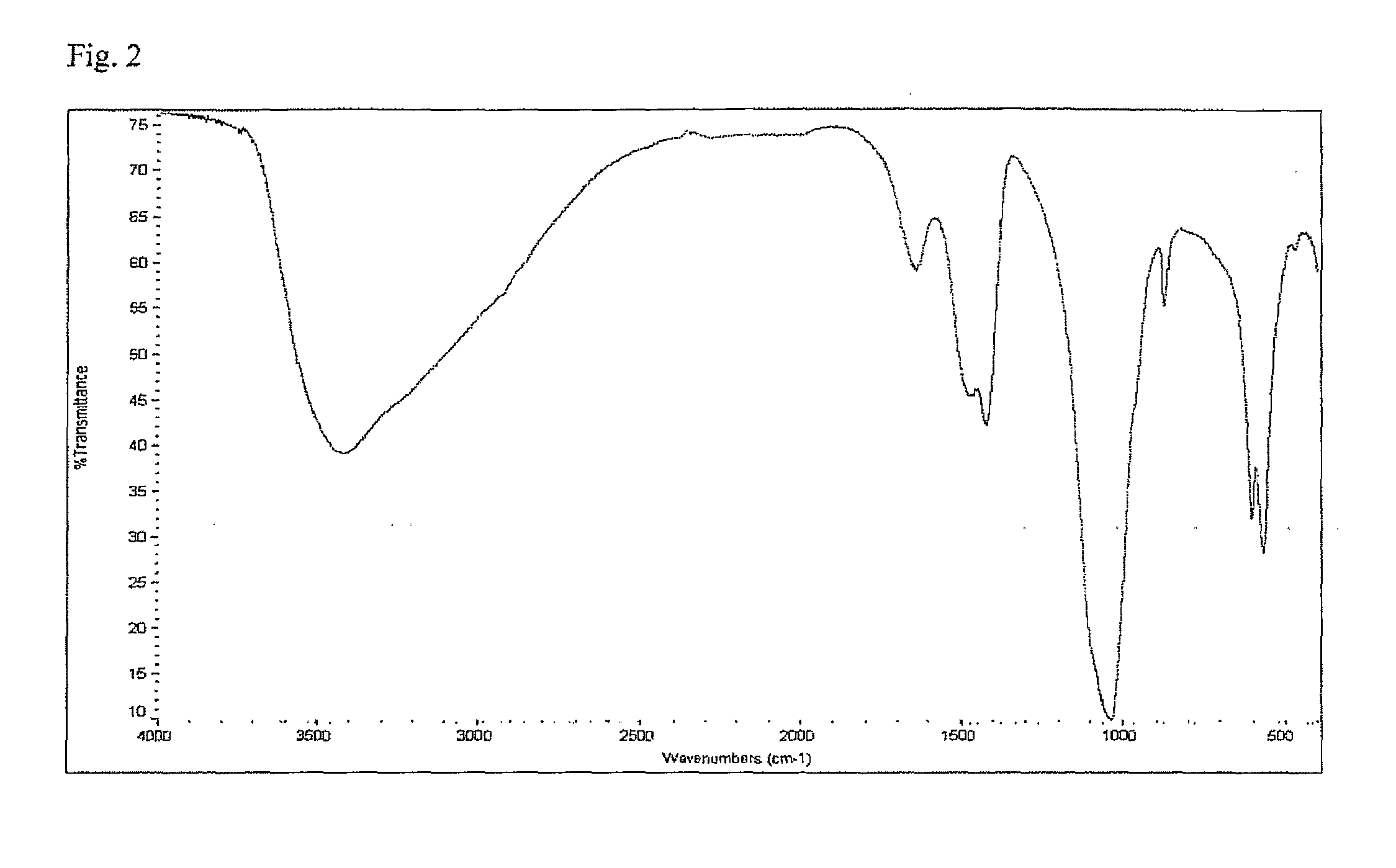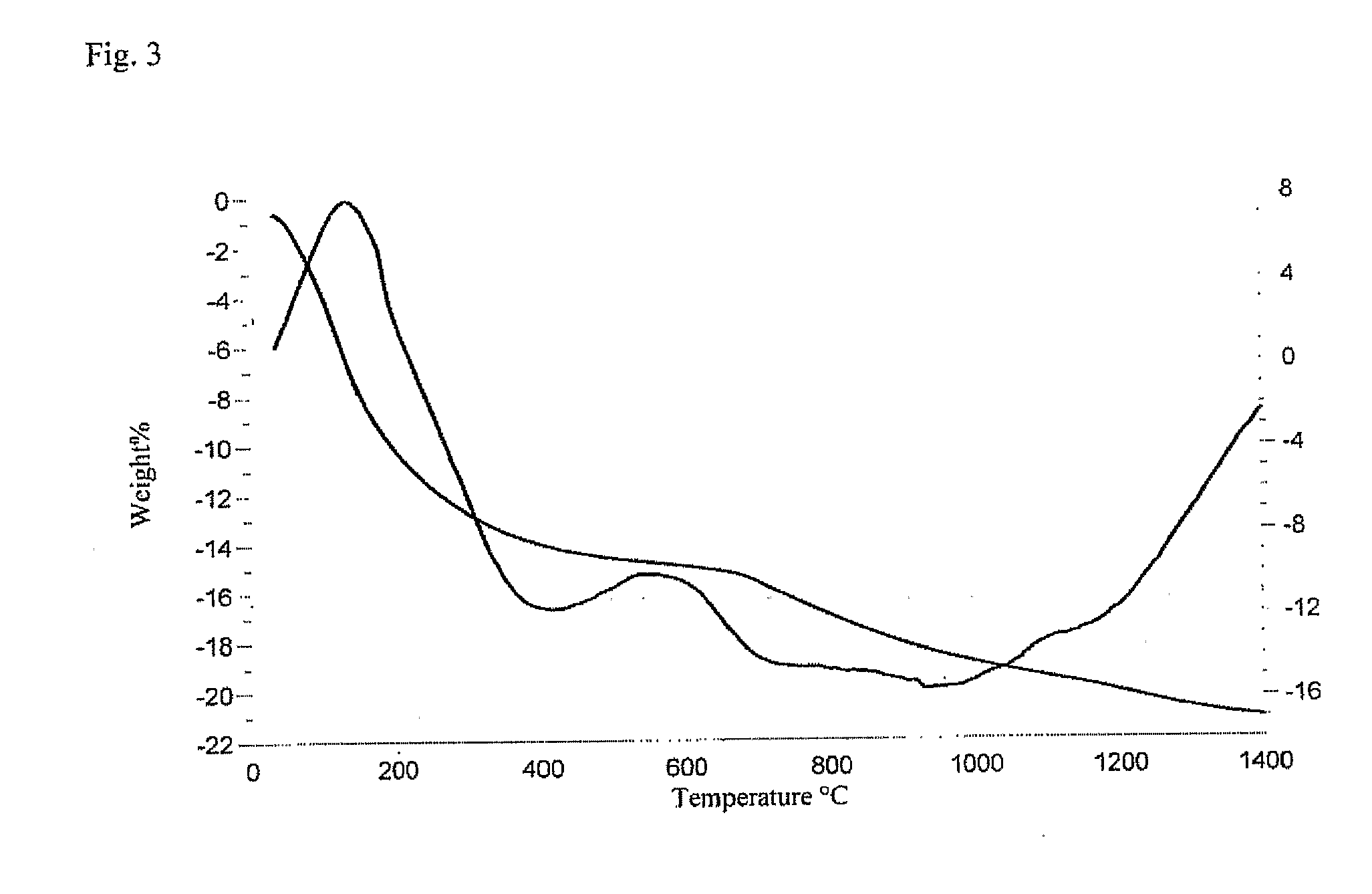Biometic compounds containing hydroxyapatites substituted with magnesium and carbonate, and the processes used to obtain them
a technology of hydroxyapatite and biometic compounds, which is applied in the field of materials, can solve the problems of reducing activity, limiting the incorporation of mg into apatite, and shortening the amount of mg in the body
- Summary
- Abstract
- Description
- Claims
- Application Information
AI Technical Summary
Problems solved by technology
Method used
Image
Examples
example 1
Preparation of the MgCHA
[0059] A 0.3 M aqueous solution of MgCl2.6H2O (48.4 g in 800 ml of water) is prepared at room temperature in a 2 l flask. 100 g of Ca(OH)2 are dissolved in the same solution.
[0060] While stirring constantly with a mechanical stirrer, the resulting suspension is brought to a temperature of 40° C.±5° C.
[0061] Once the desired temperature is reached, a 1.3 M aqueous solution of H3PO4 (88.8 g in 600 ml of water) and a 0.8 M aqueous solution of NaHCO3 (12.9 g in, 200 ml of water) are simultaneously added drop by drop; the dripping speed must be adjusted so that the addition is completed in 4 hours, while the stirring and the temperature are always kept constant.
[0062] Once the addition is completed, the mixture is stirred for another 2 hours with the temperature maintained at 40° C.±5° C. and is then left to rest for 24 hours and to return to room temperature. After 24 hours, the supernate is removed and the product is separated from the liquid residue throug...
example 2
[0080] The process described in Example 1 is repeated using a smaller quantity of magnesium salt equal to 42.35 g of hexahydrated MgCl2 dissolved in 800 ml (0.26 M).
[0081] The resulting compound is absolutely comparable to that described in Example 1 and presents the following values for the ICP analysis: Ca: 32.02%, Mg: 1.33%, P: 14.91% in weight (molar ratio (Ca+Mg) / P equal to 1.77). The quantity of Mg is thus equal to 6.8% expressed as molar percentage with respect to the calcium.
[0082] The other characterizing parameters can be superimposed on those obtained for the compound of Example 1.
example 3
[0083] The process described in Example 1 is repeated using a smaller quantity of magnesium salt equal to 36.25 g of hexahydrated MgCl2 dissolved in 800 ml (0.22 M).
[0084] The resulting compound is absolutely comparable to that described in Example 1 and presents the following values for the ICP analysis: Ca: 32.21%, Mg: 1.20%, P: 14.94% in weight (molar ratio (Ca+ Mg) / P equals 1.77). The quantity of Mg is thus equal to 6.1% expressed as molar percentage with respect to the calcium.
[0085] The other characterizing parameters can be superimposed on those obtained for the compound of Example 1.
PUM
| Property | Measurement | Unit |
|---|---|---|
| Temperature | aaaaa | aaaaa |
| Temperature | aaaaa | aaaaa |
| Temperature | aaaaa | aaaaa |
Abstract
Description
Claims
Application Information
 Login to View More
Login to View More - R&D
- Intellectual Property
- Life Sciences
- Materials
- Tech Scout
- Unparalleled Data Quality
- Higher Quality Content
- 60% Fewer Hallucinations
Browse by: Latest US Patents, China's latest patents, Technical Efficacy Thesaurus, Application Domain, Technology Topic, Popular Technical Reports.
© 2025 PatSnap. All rights reserved.Legal|Privacy policy|Modern Slavery Act Transparency Statement|Sitemap|About US| Contact US: help@patsnap.com



